French Polynesia’s Only Travel Guide You Need For A Great Trip in 11 Easy Steps
- Destinations Oceania
Cruisit Team
- September 13, 2022
- 1
- 4954
- 58 minutes read
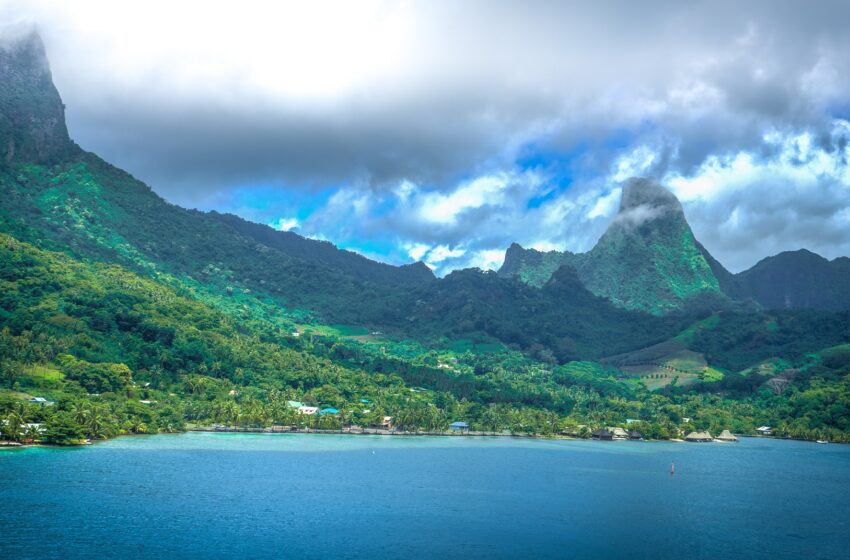
French Polynesia’s Background
Polynesians had been living on these islands for hundreds of years before Westerners found them. Several explorers’ marae have survived to the present day. French invasion of the Polynesian islands began in the 19th century, after the British discovered Tahiti in the 1760s. France resumed nuclear testing on the Mururoa atoll after a three-year ban, sparking widespread protests in September 1995. In January of 1996, the experiments were put on hold. In recent years, French Polynesia has been actively pursuing political and economic independence from France. Improvements are being made, but full realization is likely to take at least two decades. Due to the lack of autonomy, discrimination based on sexual orientation or gender expression is against the law throughout the archipelago, thus you shouldn’t run into any trouble when there.
Located in the azure waters of the south-central Pacific Ocean, French Polynesia is made up of five distinct island groups: the Tuamotu, Marquesas, Gambier, Austral, and Society Islands. Sailing around these islands is the dream vacation in style. You may pick from a wide selection of white, pink, and black beaches, all of which are bordered by tropical lagoons and coral reefs rich with marine life including dolphins, turtles, rays, and sharks (mostly the harmless variety). French Polynesia is an ideal location for a wide variety of water sports, including snorkeling, diving, surfing, and kiteboarding.
The majority of the population of the Society Islands lives on Tahiti, the largest island in the archipelago. The region’s only international airport is located here, making Pape’ete a likely first stop for visitors from beyond the South Pacific. The heart-shaped island of Mo’orea is just 15 kilometres across the Pacific from Tahiti, and it is well-known for its two beautiful bays and several hiking trails. In contrast, our final destination, Bora Bora, is the perfect spot to disconnect from the world.
“In the South Pacific, you can find sanctuary, where you can escape from the stresses of the outside world and completely unwind. All of the activities available here, from hiking to scuba diving to island hopping to simply relaxing, are nothing short of enchanted. This is a dream holiday, with no prejudice and stunning natural scenery.”
French and Chinese influences have transformed Polynesian cooking, adding new dimensions of flavour. Yams, sweet potatoes, bananas, and breadfruit are common ingredients. To prepare traditional Polynesian fare, food is traditionally wrapped in leaves and cooked in an underground oven with hot stones known as an ahima’a. Fruits abound, but vegetables are scarce. That’s because ‘cold-blooded’ vegetables struggle to thrive in the region’s heat temperature.
Staying on the move will allow you to take advantage of all that French Polynesia has to offer visitors. This Cruisit French Polynesia travel guide provides an itinerary that strikes a balance between leisure and exploration. Arrive in this untapped South Pacific paradise and enjoy it to the fullest. The following itinerary for French Polynesia is tailored to the country’s peak tourist season, but may still be enjoyed during the shoulder months. With sunny days spent on the beach, surrounded by verdant peaks and dramatic picture-perfect scenery, and hundreds of species to explore, French Polynesia will fulfill your wildest dreams.
Moreover, we will provide you with all the information you need to go across French Polynesia with ease by providing you with a comprehensive travel guide. As you read on, you’ll learn about the best of what French Polynesia has to offer—its cities, sights, transit options, and more. If you’re pumped up enough, then let’s get started!
- Go on a guided tour to see the shark and humpback areas (humpbacks swim by Rurutu August-November)
- Get lost on Moorea where several secret waterfalls and interesting old ruins, are hidden in this jungle.
- Discover a hidden gem: Maupiti, a little island in the Pacific, ideal for anyone seeking a vacation away from the madding crowds.
- Relax on Huahine – the destination is popular for surfers and budget-conscious travelers looking to unwind on a beautiful, low-key island.
- See some Tahitian dancers in action; these shows are an integral part of Polynesian culture. Experience a traditional dance or musical performance, complete with a whirlwind of colorful costumes, flowers, and music.
- French Polynesians do not expect their visitors to tip or negotiate.
- Vacation packages that consist of accommodation, meals, and activities are more cost-efficient. If you couldn’t find, then make sure your stay comes with breakfast, this will also save you money.
- If you want to go island hopping or stay in an overwater bungalow, these are not cheap options, so budget accordingly. You should bring the basics (sunscreen, your own snorkelling gear, and a raincoat) because practically everything is imported and hence expensive.
- You can visit multiple islands for the price of one by purchasing an Air Tahiti Multi-Island Pass.
- Between November and April, cyclones and other tropical storms are possible.
- Tap water is safe to drink, but it’s better to check with the hotel staff incase the water is contaminated due to a flooding.
- You might want to take the Dengue Fever vaccine before you go.
- Wear water shoes to avoid hurting yourself by stepping on a sea urchin or coral.
- The primary islands offer high-quality medical facilities, but they are expensive, thus it is prudent to acquire emergency evacuation insurance (Medjet is great for that). Get travel insurance which covers your sickness, theft, injury, or cancellations.
- Even though break-ins are uncommon, you should always lock your lodgings when you leave them.
- English is commonly spoken
Crime & Scams in Fiji
With almost no serious crime, French Polynesia is a safe travel destination. Some assume there’s no need to overcharge or scam tourists since the place is already so expensive. Nevertheless, keep your valuables concealed, your hotel door locked, and your rented car locked at all times.
To stay safe, you should know the following regulations:
You’re required to carry a copy of your identification at all times.
The possession of any amount of illegal drugs is a criminal offense.
As in France, it is illegal to ignore a person in danger. Witnessing an accident requires you to at least call the emergency. (dial 17 for police).
Be vigilant, particularly if you are in public places used by foreigners, near official buildings, crowded attractions, or on public transportation. Avoid poor areas of the city. Take care on city streets, especially after dark or if you are on your own. Don’t carry large amounts of money or wear valuable watches or jewelry. Avoid using your mobile phone in the street.
Healthcare in French Polynesia While Traveling
Every island has a government clinic, and some also have private doctors who provide good care. The cost of medical care is high, an d, getting medical help on one of the more remote islands can take a long time. The cost of medical evacuation from those islands to Papeete, Tahiti, can easily exceed US $10,000, so having travel insurance is highly advised. Also, y ou should talk to your doctor before going to the islands if you have a chronic health problem. Due to the tropical climate, any open wounds or cuts should be treated as a way to prevent infection. Keep with you a small box of adhesive bandages and a tube of antibacterial ointment at all times.
Water-borne diseases and parasites are not a concern. However, the islands occasionally experience outbreaks of dengue fever, a viral disease spread by the bite of an Aedes aegypti mosquito. Fevers, headaches, muscle and joint pains, exhaustion, nausea, vomiting, and a rash are all symptoms which take a week for recovery. Although there is currently no vaccine available for dengue fever, it is still important to take steps to avoid catching the disease. These include using insect repellent frequently, wearing long-sleeved clothing, keep your room free of mosquitos, and get rid of stagnant water.
Medical department emergency number is 15
Before every trip, make sure you are up to date on all routine vaccinations. Among the key recommended vaccines globally are chickenpox (Varicella), diphtheria-tetanus-pertussis (DTP), influenza (flu), measles-mumps-rubella (MMR), polio, hepatitis, typhoid, and shingles. If you will be in contact with wildlife, you may want to consider getting a rabies vaccination.
When visiting French Polynesia, you are requiredto purchase travel medical insurance that covers Covid-19, or to sign a declaration that you will cover the full cost of care, hospitalization, or repatriation incase of a Covid-19 illness.
Only eat foods that are cooked and served hot, avoid food that has been sitting on a buffet, and eat raw fruits and vegetables only if you have washed them in clean water or peeled them.
Only drink beverages from factory-sealed containers, avoid ice because it may have been made from unclean water, and only drink pasteurized milk.
Wash hands often with soap and water for 20 seconds, especially after using the bathroom and before eating. If soap and water aren’t available, use an alcohol-based hand sanitizer that contains at least 60% alcohol. Also, keep your hands away from your face and mouth
While French Polynesia’s year-round sunlight and warmth make it an ideal vacation destination any time of year, some months are better than others.
Shoulder Season
If you’re hoping to avoid the crowds but still enjoy near-perfect weather, visit in May, September, or October. There is a possibility that accommodation rates will drop as a result of increased availability.
High (Peak) Season
Due to dry and pleasant weather (25°C – 35°C), June through August are peak tourist months. It also hosts some of the best festivals, including the Heiva Nui celebration in July. Due to the high demand, it may be necessary to make reservations in advance.
Off-Season (Low Season)
There is an increase in tropical showers from November through April, although the heat and humidity are still abundant. The rain often doesn’t last long, so there’s no concern about getting rained out. The only concern is when El Niño disrupts the local ocean currents every few years. It is important to have adequate travel insurance during this period as tropical storms are possible. To avoid the humid weather, book a room with air conditioning. Temperatures will average around 86°F (30°C).
By Plane
Only flights from the United States, Japan, New Zealand, New Caledonia, and the Cook Islands can be taken directly to Tahiti International Airport (PPT). A journey from Tokyo takes roughly 11 hours, making it more expensive (around $2,000). However, $500 is the average flight cost.
By Plane
As there are about 28 domestic airports within French Polynesia, traveling between various islands is quick and easy. They can cost anything from $90 to $600, which is far more than one might expect to pay. The Multi-Island Pass provided by Air-Tahiti is a great way to see a number of islands for the price of one.
By Car
If you plan on spending more than a few days on the island, you may want to look into car rental options in either Papeete or the airport. Rental car agencies including Avis, Europcar, and Hertz all offer the same daily fee (starting at $100) with unlimited kilometers. To get a car rental, you’ll need a valid national driver’s licence in either English or French. Parking is few, traffic circles are abundant, and right-hand driving is the norm.
By Taxi
Taxis are an expensive mode of transportation, however they may be found at the airport, in Valma, and by hailing one on the street. Don’t count on taxis exclusively because they can be difficult to hail during rainy or busy periods. Prices increase by at least 20% after dark. Few taxis use meter, so the fare must be agreed upon in advance.
By Bus
Modern buses (RTC white buses) are gradually replacing the traditional Le Trucks. Papeete’s bus routes are color-coded according to their destinations: red and white buses head west to Centre Moana Nui, green and white buses go a lesser distance, and orange and white buses go further to Tahiti Iti and the south coast. On the weekends and at night, bus service is quite limited. One-way fares can cost as little as a dollar.
By Boat
Cruise ships and ferries are Tahiti’s basic water transportation and the best way to reach day trip locations. The Aremiti V boat is the largest and quickest (it can transport 700 passengers in around 30 minutes). Aremiti Ferry can carry 450 passengers, however it will take you around 45 minutes to get there. The ferry port is on Boulevard Pomare. Schedules and prices vary per firm and route. For further details, check out the Tahiti Tourism Board’s website or call Aremiti Ferry at (689) 50-57-57.
By Bicycle
Getting around on a bicycle is a great way to exercise and take in the sights. A wide variety of hotels provide bicycle rental and/or guest use. However, you should be aware that traffic in and around Pape’ete can get rather heavy.
SIM Cards & Calls in French Polynesia
Since French Polynesia is not a member of the European Union (EU), EU SIM cards cannot roam for free and international roaming is expensive. Vini offers standard SIM cards for $7 to $15, Vodafone Polynesia offers them for $6 to $13 or you may pay $15 for data alone. A Vini tourist SIM card is highly recommended for its superior data, speed, and coverage. You may also purchase a 30-days Polynesia Tourists SIM card with 500MB of data for $20 from any phone store.
SIM cards must be registered at the time of purchase, and SIM-lock-free phones are required to utilise local SIM cards. Your phone must be able to receive signals on the local frequencies. CDMA phones will not function, but GSM compatibility is 99% guaranteed if you have a modern smartphone (if your phone has a SIM card slot, then it supports GSM). You shouldn’t have any trouble using your phone in French Polynesia if you bought it in Africa, Asia, Europe, or Oceania (ITU regions 1 and 3). If you bought your phone in the Americas (ITU Region 2) and it is a low- or medium-end device (without Tri-Band or Quad-Band support), you may not be able to use it in French Polynesia or may only be able to use slower networks (3G or 2G). However, if your phone is a medium- or high-end device with Tri-Band or Quad-Band support, you will be able to use it in French Polynesia.
Alternatively, you may also get a prepaid eSim card from a company like Airalo, SIMCorner, HolaFly or Nomad. All the providers offer data-only plans that may be used with an eSim-enabled phone, so make sure your phone is compatible. It is also possible to sign up for a Solis WiFi Hotspot. Check before you travel because they only serve select areas. Airalo provides the most extensive coverage of over 180 nations.
Local Internet & WiFi in French Polynesia
You may easily connect to the internet in Tahiti, though some hotels may require an Ethernet cable if you’re staying there. Free Wi-Fi is becoming increasingly common at hotels, and some even give it throughout your entire stay. Hotels typically have business centers for those who didn’t bring their own electronic devices.
Top Places in French Polynesia

Faarumai Waterfalls
In Tiarei village is the beautiful Faarumai Waterfalls, which may be reached by a quick hike through the forest. There are three stunning waterfalls to admire: Vaimahutu, Haamarere Iti, and Haamarere Rahi, all within walking distance of each other. It’s been deemed a must-see attraction by many. But mosquitoes can be rather aggressive, so it’s best to protect yourself with some sort of bug repellent.
Arahoho Blowhole
Arahoho Blowhole, one of Tahiti’s most popular tourist attractions, is located on the island’s rocky coast and is surrounded by a beautiful black sand beach. When waves hit the shore, they create a tremendous explosion that sprays stunning plumes of water into the air, exciting onlookers and providing photo opportunities.


Pape’ete Market
Visit the Pape’ete Market to immerse yourself in the sights, sounds, and fragrances of real Polynesian life. This indoor market hall is the island’s oldest continuously operating institution in Tahiti.
Notre Dame Cathedral
One of Papeete’s oldest and greatest churches is the Cathedral of Notre Dame. This bright yellow gothic structure first opened in 1875 but has been demolished and rebuilt multiple times before its most recent renovation in 1987.


Magic Mountain
Magic Mountain is one of Moorea’s highest points. It runs along the island’s edge and provides breathtaking vistas of the island and the crystal-clear lagoon and ocean beyond. Magic Mountain gives guests a taste of the beautiful landscape of a remote volcanic island as they pass by towns, beautiful valleys, fruit orchards, and even pineapple bushes to make their way up to the summit.
7-day Itinerary in French Polynesia
Day 1-2
Arrive and Explore Tahiti
Explore the central town once you’ve settled into your accommodation. Enjoy a delicious meal of extraordinary seafood in the heart of Papeete before setting off on foot to explore the rest of the city. When you want to experience a little bit of Papeete’s cultural side, head to Pape’ete Market. Enjoy some coconut water and mangoes before retiring to your accommodation for the night.
The following day, begin your journey to Teahupoo surfing capital with detours to the island’s botanical gardens, historic ceremonial grounds, and black sand beaches (or the world-famous white sand Maui Beach). Next, visit the Gauguin Museum, the Museum of Tahiti and Her Islands, and the James Norman House to learn more about the fascinating history of the Polynesian archipelago. At the end of the day, have an authentic meal at one of the many food trucks parked in Place Vaiete, where you can dine on a variety of cheap local specialties, Chinese classics, and French crepes to the tune of live music.


- Backpacker:
- Budget:
- Mid-range:
- Luxury:
When it becomes dark, a foreign city may be twice as dangerous - especially if you don't understand the language and are unfamiliar with the area. There is no reason to be alarmed about walking alone in the city since there is almost none petty crime recorded in Tahiti to warrant worry. You can walk safely at day, but nevertheless be wary while walking at night and be alert in crowded areas. You can always take taxis, if you don't feel comfortable. Be wary of petty crime by taking precautions mentioned in the safety section above.
Day 2-3
Mo’orea
For the coming 2 days, enjoy the beautiful Island of Moorea. Moorea’s resorts is suitable or fevery traveler’s budget, but booking ahead of time, especially during peak season, is essential for getting the best rates. Avoid the south, which has few attractions or facilities, and instead stay between Haapiti and Papet’ai for the best access to the lagoon and surrounding food options.
Head to the ferry dock early to get a ticket towards Moorea Island which is only a 30-minute ride. Be aware of the dolphins leading the way to the dock as the scenery changes from Tahiti to Mo’orea. Start your day by leaving your bags at the hotel, and then take a 4×4 safari over the island’s northern shore to see Cook Bay and Opunohu Bay. Some tour groups, after seeing the sights along the shore, head uphill to see the spectacular waterfalls of Mo’orea, and finish the day with a visit to the Tiki Theatre Village for a dance performance.
Choose to spend the following day swimming with whales, doing scuba diving, or taking a tour of a shark and stingray feeding lagoon. Soak up the island atmosphere and get some rest so you can go on an exciting trip tomorrow.
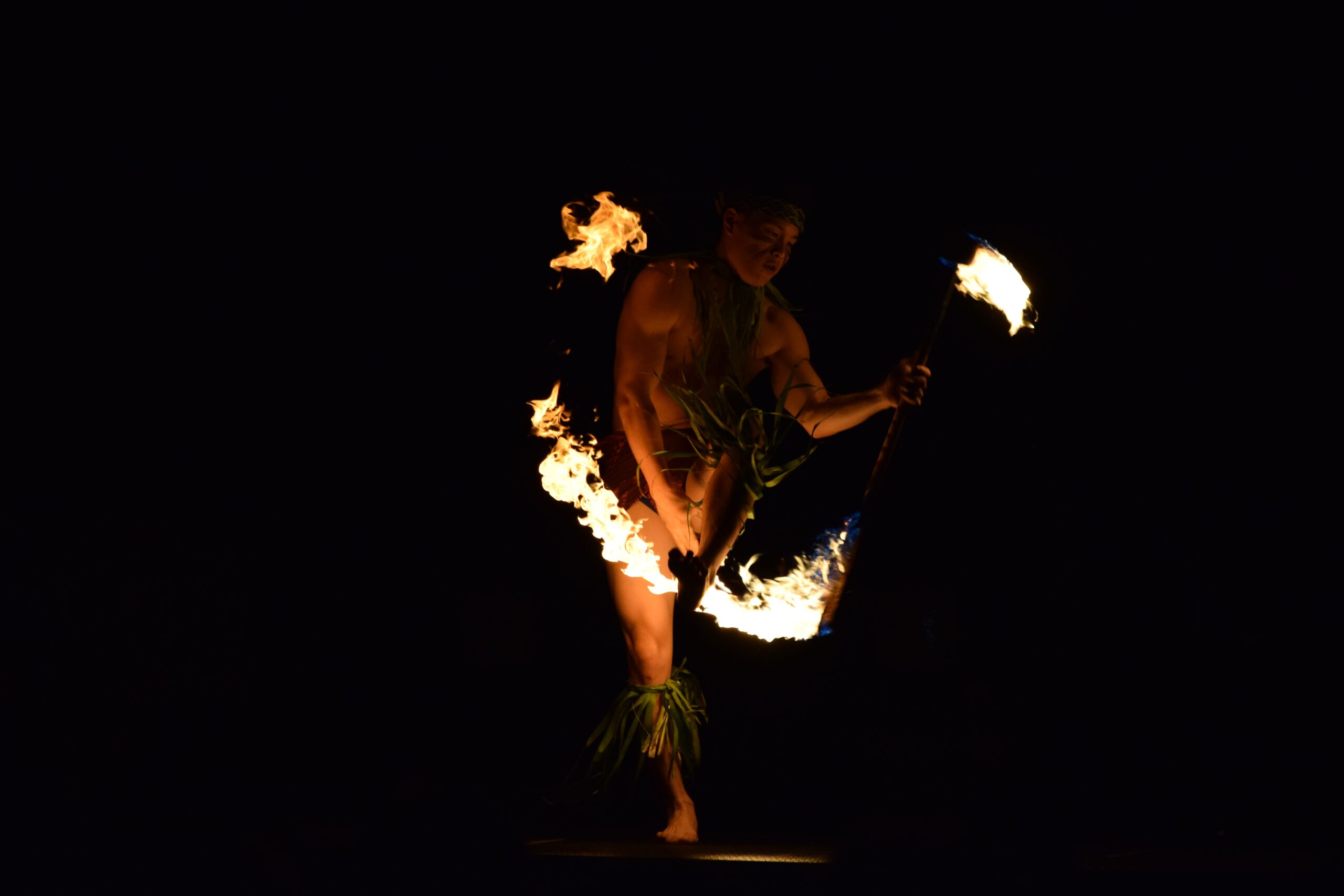

Day 5-7
Bora Bora
Since Bora Bora is the gem of French Polynesia, it was intentionally saved for last and given the maximum vacation days. Once you’ve settled into your lodgings, you can be ready to embark on a fantastic day. Take pictures while you stroll along the beautiful beaches framed by the turquoise waters of the lagoons and the carved rocks of Mount Otemanu. To make the most of your time in the lagoon, we recommend booking a full-day boat tour that includes opportunities to swim with nurse sharks, feed stingrays, and snorkel among the reefs. Later, visit a secluded bay for a seafood lunch and ukulele performance.
You can choose to spend the next day lounging on your deck or visiting the equally alluring Matira Beach. The next step is to cycle the entire island’s 32 kilometres, taking in WWII stations, historic temples, and sleepy towns along the way. Off-road 4×4 tours to see the best of Bora Bora’s flora and fauna, while also learning about the island’s volcanic history and ancient cultures, are also quite popular.
Today is your last chance to soak up the stunning scenery of French Polynesia and capture some photos as a memento. Have a good breakfast before your flight.
Bora Bora is not cheap, so budget tourists could consider skipping it in favour of the more laid-back Maupiti or Huahine, or the hiking in Raiatea.
Extra Day: Visit Tuamotus
If you’re still not ready to leave home, the 78 coral atolls that make Tuamotu provide more of the same paradise you’ve come to expect from your island getaway. These islands to the north and east of Tahiti are far enough from the mainland to avoid mass tourists yet close enough for a quick ferry trip, making them ideal for a relaxing and authentic vacation. Since fishing, coconuts, and black pearls have been important to the archipelago for hundreds of years, tourists should not expect much of a focus on the tourism industry. Therefore, making reservations in advance is recommended.
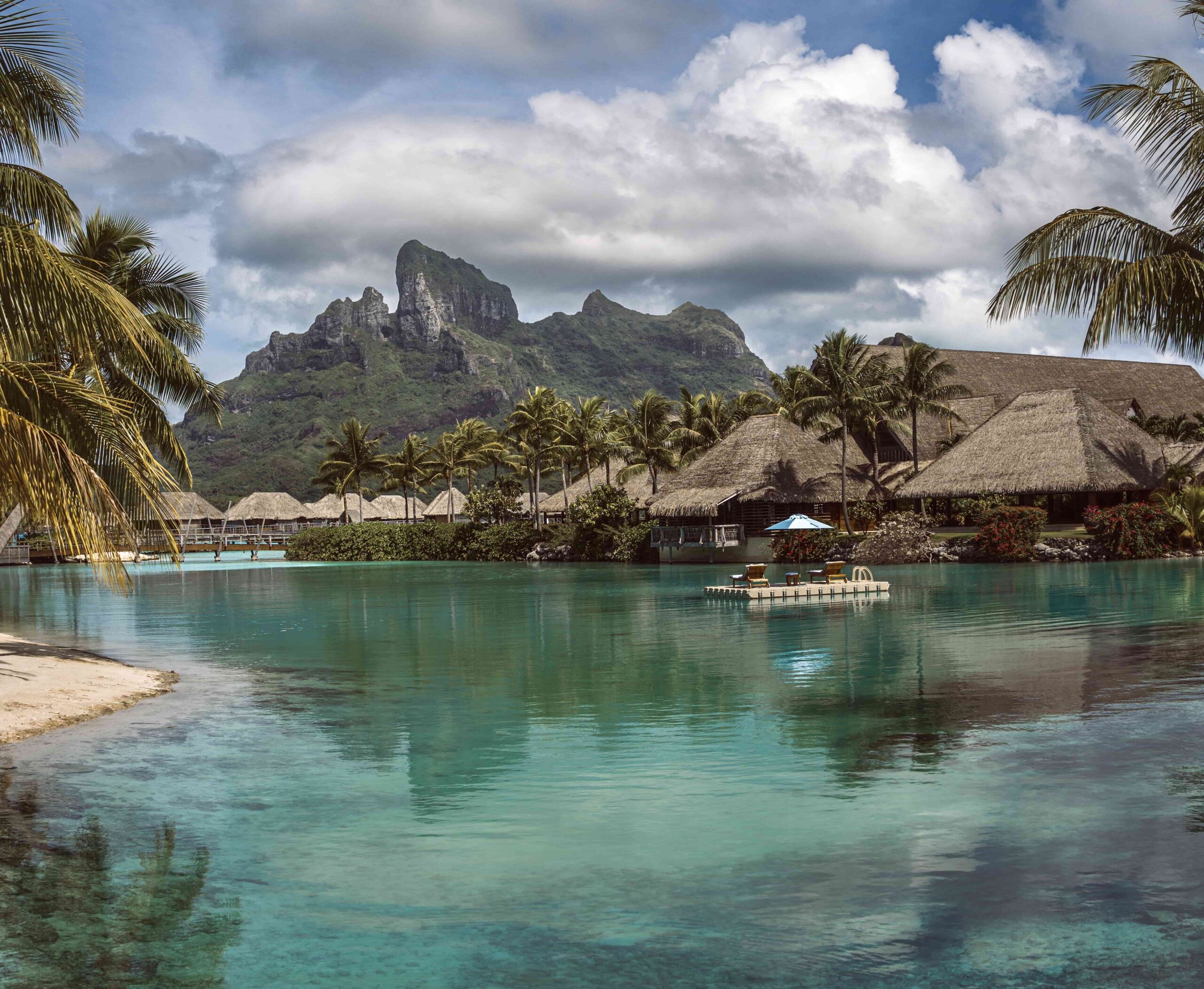
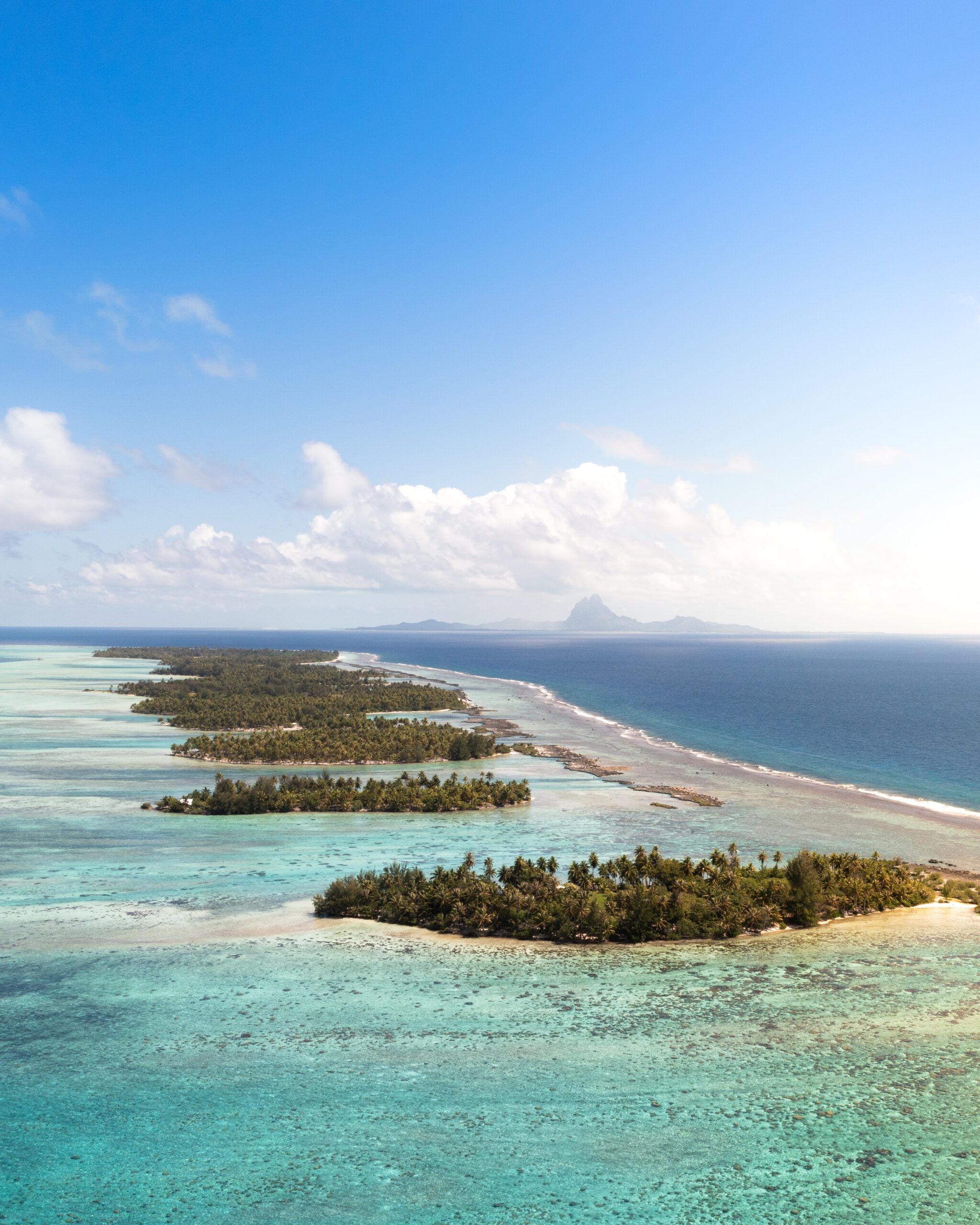

The Most Popular Food in French Polynesia
French Polynesian food is characteristic of island fare, with dishes highlighting freshly caught fish, ripe fruit plucked from trees, and luscious coconuts cracked open. French Polynesian food combines French and Chinese influences; nonetheless, some distinctly New Zealand and Australian touches sneak in there, too.
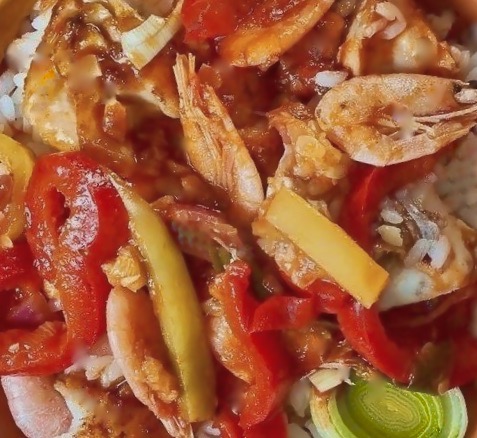
Pahua taioro
Both turbot snails and clams can be used to make the delicious Tahitian meal known as Pahua taioro (pahua). Snails and clams need to be steeped in fresh water for several hours before being mixed with taioro, a condiment produced by fermenting almonds, grated coconut, seawater, and shrimp. At the very end, seasonings like garlic, onions, salt, and pepper are added.
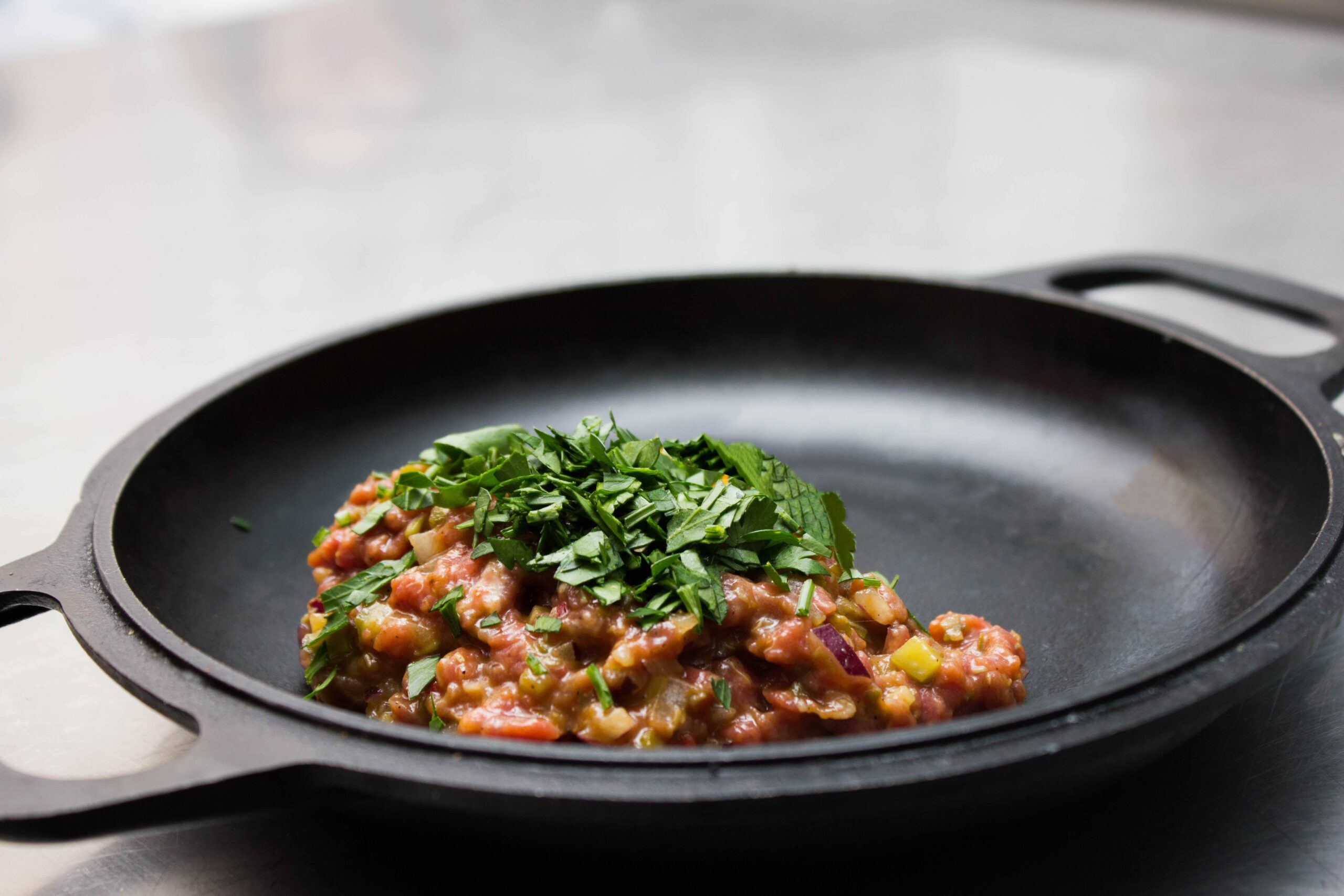
Pua toro
Pua toro, a dish of canned corned beef, made by sautéing the meat in a skillet with chopped red onions, canned tomatoes, cabbage, salt, garlic, oil, and pepper. Spaghetti, rice, or roasted breadfruit are all good options for a side dish.

Poulet fafa
Chicken luau is what the Hawaiians term the Tahitian dish known as poulet fafa. Pieces of chicken are fried in heated oil till golden brown. The leftover oil is used to sauté onion, garlic, and ginger before the chicken is placed back in and cooked again. To thicken the sauce, cornstarch or arrowroot dissolved in coconut milk is added.

Po’e
Tahitian poe is a dessert made of banana purée, brown sugar, and arrowroot or cornstarch. Pudding is made by baking the mixture until it is set and bubbling. It’s served in cubes, cold, with coconut cream on top. Papaya, mango, pineapple, or any other tropical fruit instead of banana. As a beloved dessert, it is frequently served at Tahitian tamara’a barbecues.
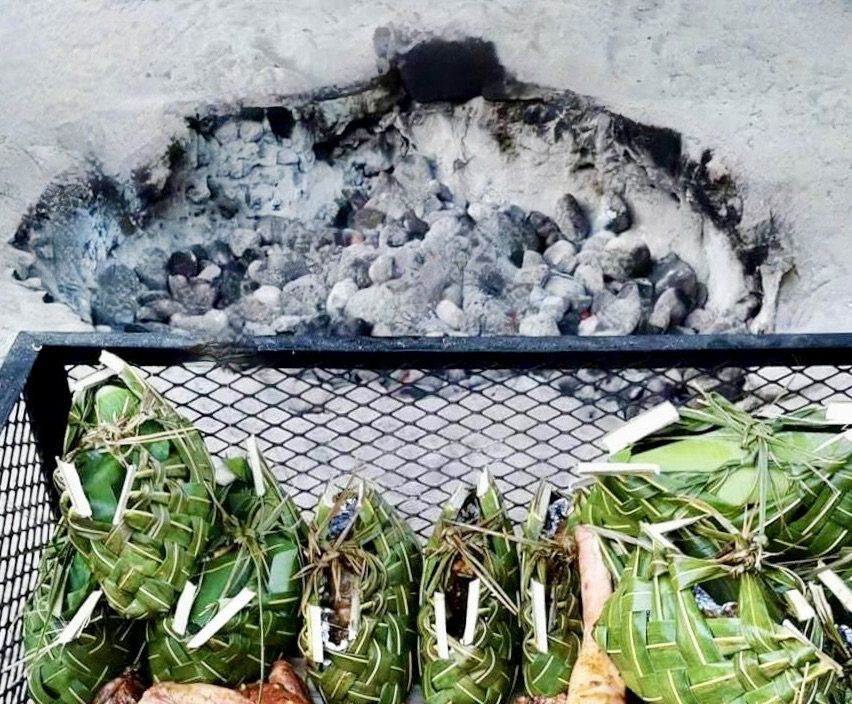
Ahima’a
Tahitian ahima’a is named after the oven used to cook it, which consists of a hole dug in the ground and lined with volcanic stones, with a layer of wood and coconut husks placed on top. After the fire is out, green branches and banana leaves are laid over the hot stones. Foods like pork and poultry are seasoned and lightly basted with oil before being placed on the leaves. Other ingredients like bananas, breadfruit, fish, and vegetables are also added before being wrapped in leaves.
What's the Travel Budget for French Polynesia
Flights
- Flights cost an average of $500 from nearby countries. Tickets however can cost around $2000 and more depending on which class and from which country you depart from.
Accommodation
- Nomad Backpacking style travelers can expect to spend around $210 for a week
- Budget travelers can expect to spend around $350 for a week
- Mid-range travelers can expect to spend around $470 for a week
- Luxury travelers can expect to spend around $920 for a week
Food Budget (Three meals and drinks)
- Nomad Backpacking style travelers can expect to spend around $20 per person per day
- Budget travelers can expect to pay around $30 per person per day
- Mid-range travelers on average would cost them $40 per person per day
- Luxury travelers can expect to pay around $75 per person per day
Overall Budget Styles (Not including Flights, Tours, Transportation, or Car Rental)
- Nomad Backpacking style travelers can expect to spend around $420 for a week
- Budget travelers can expect to spend around $690 for one person for a week
- Mid-range travelers can expect to spend around $950 for one person for a week
- Luxury travelers can expect to spend around $1800 for one person for a week
Flights
- Flights cost an average of $500 from nearby countries. Tickets however can cost around $2000 and more depending on which class and from which country you depart from.
Accommodation
- Nomad Backpacking style travelers can expect to spend around $210 for a week
- Budget travelers can expect to spend around $350 for a week
- Mid-range travelers can expect to spend around $470 for a week
- Luxury travelers can expect to spend around $920 for a week
Food Budget (Three meals and drinks)
- Nomad Backpacking style travelers can expect to spend around $20 per person per day
- Budget travelers can expect to pay around $30 per person per day
- Mid-range travelers on average would cost them $40 per person per day
- Luxury travelers can expect to pay around $75 per person per day
Overall Budget Styles (Not including Flights, Tours, Transportation, or Car Rental)
- Nomad Backpacking style travelers can expect to spend around $420 for a week
- Budget travelers can expect to spend around $690 for one person for a week
- Mid-range travelers can expect to spend around $950 for one person for a week
- Luxury travelers can expect to spend around $1800 for one person for a week
Flights
- Flights cost an average of $500 from nearby countries. Tickets however can cost around $2000 and more depending on which class and from which country you depart from.
Accommodation
- Nomad Backpacking style travelers can expect to spend around $210 for a week
- Budget travelers can expect to spend around $350 for a week
- Mid-range travelers can expect to spend around $470 for a week
- Luxury travelers can expect to spend around $920 for a week
Food Budget (Three meals and drinks)
- Nomad Backpacking style travelers can expect to spend around $20 per person per day
- Budget travelers can expect to pay around $30 per person per day
- Mid-range travelers on average would cost them $40 per person per day
- Luxury travelers can expect to pay around $75 per person per day
Overall Budget Styles (Not including Flights, Tours, Transportation, or Car Rental)
- Nomad Backpacking style travelers can expect to spend around $420 for a week
- Budget travelers can expect to spend around $690 for one person for a week
- Mid-range travelers can expect to spend around $950 for one person for a week
- Luxury travelers can expect to spend around $1800 for one person for a week
Flights
- Flights cost an average of $500 from nearby countries. Tickets however can cost around $2000 and more depending on which class and from which country you depart from.
Accommodation
- Nomad Backpacking style travelers can expect to spend around $210 for a week
- Budget travelers can expect to spend around $350 for a week
- Mid-range travelers can expect to spend around $470 for a week
- Luxury travelers can expect to spend around $920 for a week
Food Budget (Three meals and drinks)
- Nomad Backpacking style travelers can expect to spend around $20 per person per day
- Budget travelers can expect to pay around $30 per person per day
- Mid-range travelers on average would cost them $40 per person per day
- Luxury travelers can expect to pay around $75 per person per day
Overall Budget Styles (Not including Flights, Tours, Transportation, or Car Rental)
- Nomad Backpacking style travelers can expect to spend around $420 for a week
- Budget travelers can expect to spend around $690 for one person for a week
- Mid-range travelers can expect to spend around $950 for one person for a week
- Luxury travelers can expect to spend around $1800 for one person for a week
If you want to know what to pack, read this list below:
- This is a conservative Polynesian country with moderate tropical weather that tends to get hot and rainy, dress accordingly
- Raincoat or Light Waterproof Jacket
- Hiking Boots or Sturdy Sneakers (Shoes You Don’t Mind Getting Wet)
- Sunscreen
- Insect Protection – Repellent and Clothing
- Sunglasses and Sun Hat
- Water Shoes
- Beach Towels/Sarong
- Dry Bag
- Money Belt or Cross Bag
- Portable Medical Kit
- Flashlight or Headlamp
- Copies of your passport.
- Get all the needed vaccinations before traveling
- A power bank is a must in any travel.
- Always have some cash with you just in case there are no ATMs and if you are dealing with a business that solely accepts cash
- Get yourself an adapter for your gadgets
- 1 toothbrush
- 1 tube of toothpaste
- 1 razor
- 1 package of dental floss
- 1 small bottle of shampoo
- 1 small bottle of shower gel
- 1 towel
- Deodorant
- Band-Aids
- Hydrocortisone cream
- Antibacterial cream
- Earplugs
- Tylenol
- Hand sanitizer (germs = sick = bad holiday)
- A key or combination lock
- Zip-lock bags
- Plastic bags (great for laundry)
- Universal charger/adaptor
- LifeStraw (A water bottle with a purifier)
- 1 dry shampoo spray & talc powder
- 1 hairbrush
- Makeup you use
- Hairbands & hair clips
- Feminine hygiene products
Clothing For Boys
- 1 pair of jeans or khaki pants
- 1 pair of shorts
- 1 bathing suit
- 5 T-shirts
- 1 long-sleeved T-shirt
- 1 pair of flip-flops
- 1 pair of sneakers
- 6 pairs of socks
- 5 pairs of boxer shorts
Clothing For Girls
- 1 swimsuit
- 1 sarong
- 1 pair of stretchy jeans
- 1 pair of leggings
- 2-3 long-sleeve tops
- 2-3 T-shirts
- 3-4 spaghetti tops
- 1 light cardigan
Want to plan your own trip, here are some of the best resources that can help you
- Skyscanner – They search small websites and budget airlines that larger search sites tend to miss. They are hands down the number one place to start.
- Momondo – This is another favorite flight search engine because they search such a wide variety of sites and airlines. Always check here too.
- Booking.com – The best all-around booking site that constantly provides the most affordable and lowest rates. They have the widest selection of budget accommodation.
- Couchsurfing – This website allows you to stay on people’s couches or spare rooms for free. It’s a great way to save money while meeting locals who can tell you the ins and outs of their city. The site also lists events you can attend to meet people (even if you’re not staying with someone).
- Intrepid Travel – If you want to do group tours, go with Intrepid. They offer good small group tours that use local operators and leave a small environmental footprint.
- Grassroots Volunteering – For volunteering, Grassroots Volunteering compiles a list of good local volunteer organizations that keep the money within the community.
- Get Your Guide – Get Your Guide is a huge online marketplace for tours and excursions. They have tons of tour options available in cities all around the world, including everything from cooking classes, walking tours, street art lessons, and more! It has the world’s largest collection of things to do with more than 30,000 activities in 7500 destinations.
- SafetyWing – Safety Wing offers convenient and affordable plans tailored to digital nomads and long-term travelers. They have cheap monthly plans, great customer service, and an easy-to-use claims process that makes it perfect for those on the road.
- Trip Advisor: Check the reviews and then book your accommodation. TripAdvisor is where you go when you want to compare prices with multiple accommodation providers.
- VRBO: is the main search engine to use when you are looking for a home or apartment rental. It can sometimes be cheaper than hotels and it is the best way to stay in areas that offer a more local feel.
- Hostelworld: With one of the largest databases of hostels in the world, Hostelworld is the go-to site when you are looking for budget accommodation.
- Rome 2 Rio: If you want to see how to get somewhere by plane, train, bus, ferry, or car Rome2Rio lays it all out for you as well as related costs.
- World Nomads Insurance: When traveling you should always have travel insurance. We have found the best bang for your buck is by far World Nomads.
Final Thoughts on French Polynesia
With its combination of pink, white, and black sand beaches, the great blue water offers a novel setting in which to unwind. These Islands present fresh opportunities for hiking, scuba diving, and simply relaxing. French Polynesia’s attractiveness stems from many factors, including its ideal hot weather, thrilling music, festivals, and vivid picture-perfect settings of mountains and coastline excellent for lounging and watching the sunset. For its stunning natural beauty, the abundance of unique species, and wealth of interesting cultural sites, French Polynesia is a destination that cannot be missed by any tourist. Are you considering a trip to French Polynesia?
Have you ever been to French Polynesia? Leave your comments or questions in the section below.
1 Comment
Hi there to every body, it’s my first visit of this weblog; this website
consists of awesome and genuinely good material in support of travelers.